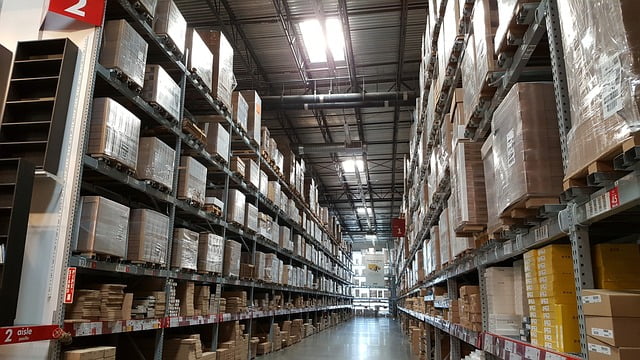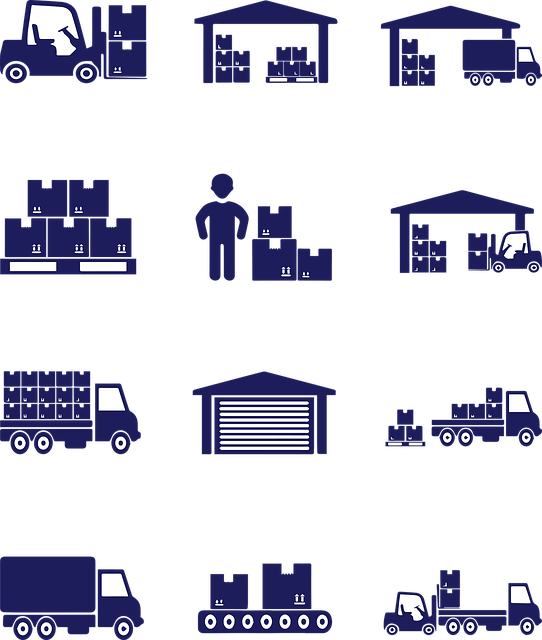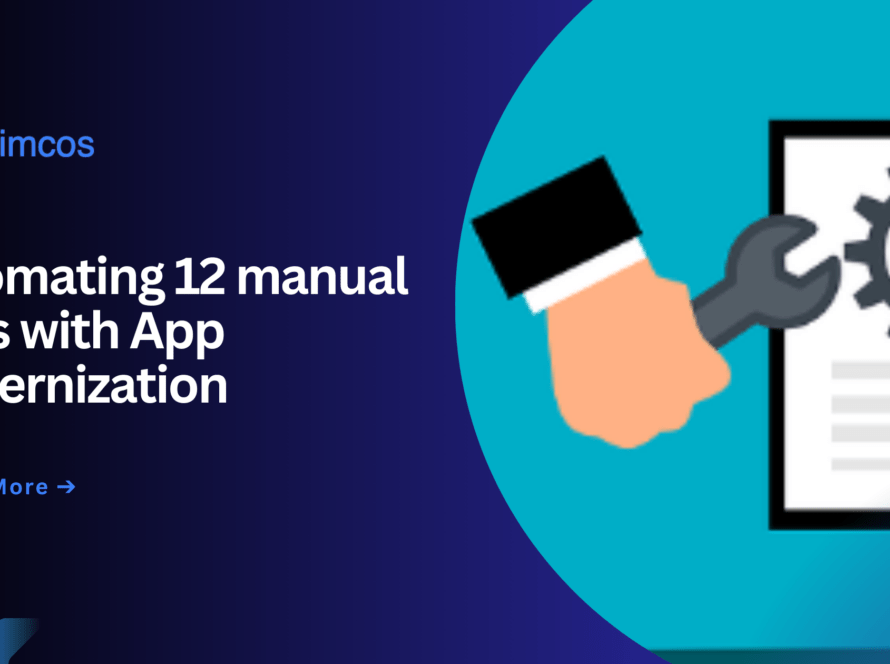In the fast-paced, consumer-driven marketplace of today, supply chain operation is necessary to maintain competitive advantage in owner-led businesses that heavily rely on streamlined operation for survival. A key supply chain optimization aspect is the Warehouse Management System, WMS. Owner-led businesses deal with wider ranges of products and higher volumes of orders as more people shift to e-commerce.
Business today being competitive measures up in the efficient and automated management of a warehouse. A WMS enables the company to get the best out of its operation. In a WMS, one gets real-time data and is able to automate tracking inventory, order fulfilment and shipping.
In this blog, we are going to walk you through what a Warehouse Management System is, the necessity for owner-led businesses and its core features, but most importantly how it will transform warehouse operations for companies of all sizes, ensuring both productivity and profitability.
Table of Contents
What is a Warehouse Management System?
A WMS is specific software that enables daily operations in a warehouse, including the receiving and issuing of goods, order administration and shipment maintenance. Workflows are improved through a WMS by instantly offering the information required to know inventory, the location of the items and whether an order has been fulfilled or not. Accelerating the order fulfilment process and the overall process’s precision is achieved by raising automation in each of the phases, for example in receiving, putaway, picking, packing and shipping.
WMS platforms automatically interface with other business applications, like ERP and TMS. This makes the coordination very smooth across the entire supply chain. Integration ensures greater control over the inventory, efficient warehousing and better-informed decisions-all of which contribute to higher efficiency, reduced errors and lower costs of operations.

The Importance of Warehouse Management Systems
The importance of a WMS is that it impacts the overall efficiency of a warehouse and, thus, offers several important benefits to businesses.
• Optimized Inventory Management
This means the tracking of levels, locations and movements of the items within the warehouse in real-time. Overstocking and stockouts are thus avoided because this minimizes the chances of holding excess inventory thereby saving cash flow. It also makes possible tracking incoming and outgoing goods better, thus raising accuracy in its inventory and reducing errors.
• Smoother Order Fulfilment, Less Error
Along with automated picking and packing features, a WMS rule out human mistakes in order processing. The right goods will be picked and packed in the right quantities, not to mention reducing the likelihood of wrong orders and returns. This all leads to faster, more accurate order fulfilment-meaning bigger savings on customer satisfaction and retention.
• Optimal Use of Warehouse Space
An optimized Warehouse Management System represents the warehouse layout and its ability to put away products. The system provides an optimum location for putting away products based on its study of movement frequency; therefore, it helps in better accessibility and reduces the time taken to draw out products from the warehouse. Even the utilization of space is at its best form and the labor cost to handle stock takes a knock.
• Cost Reduction
The WMS automate a large portion of labour-intensive activities like tracking inventory, picking orders and shipping; therefore, reducing manual labour cost by a significant amount. In addition to that, reduction in error, optimizing space and better management of inventory reduces operational expenses on various counts added up towards total cost saving.
• Improved Supply Chain Visibility
Actual time data coming from a Warehouse Management System gives better forecasts and decisions. Businesses gain total visibility in their inventory, orders and warehouse performance and thus allow the potential to react to changes in demand or possible points of disruption in the supply chain.
• Improved Labour Productivity
A WMS significantly increase labour productivity since it provide optimized pick paths, direct putaway locations and automatically carry out repetitive tasks. Unlike when they were busy searching for products or manually updating records, warehousing personnel do not need to spend their precious time on that.

Key Features of a Warehouse Management System
A WMS gives a long list of features, all of which are highly customized to ensure the company in question keeps its warehouse processes running as efficiently as possible. Listed below are some of the most important features that are offered through a Warehouse Management System
• Inventory Management
Central to every WMS is inventory management. The system continues to monitor inventory levels at all times and can therefore provide real-time updates regarding inventory stock levels, item locations and order statuses. Subsequently, companies manage inventory replenishment in hopes of reducing the probability of stockouts or overstocking.
• Receipt and Put away
A WMS checks received goods to ensure they reach the warehouse without mistake and be stored in the warehouse efficiently. The system guides the warehouse staff through the receiving process; it ensures the right items are delivered and accordingly located in the optimal storage location. Thus, it saves handling time and reduces product placement errors.
• Order Picking and Packing
A WMS optimizes the process of ordering and picking goods through giving an orderly picking route to the warehouse workers. It could provide the shortest paths within the warehouse to help orders pick items fast and in a very effective manner. Upon picking, the WMS ensures correct packing and shipping thereby ensuring that this is done correctly before sending orders to customers.
• Shipping and Returns Management
The WMS would look after the shipping process by liaising with transportation systems so delivery times are assured. It creates auto-generated shipping labels, bills of lading and all documents in order to send an order out. On returns, it accounts for the return efficiently while keeping the inventory up to date.
• Labor Management
It manages employee productivity and helps to efficiently allocate labour resources. Through the monitoring of workloads, it analyzes work patterns that indicate optimum levels of staffing, bottlenecks and areas that need improvement. This directly leads to a more balanced workload and reduced labour costs.
• Integration with Other Systems
Modern WMS platforms interact with other business applications, such as ERP and TMS, to carry out seamless data exchanges between two different systems. Such applications yield aModern WMS solutions that interact with other applications in the business to carry out seamless data exchanges between two different systems. For example, ERP and TMS exhibited and businesses use this information to provide better insight into the overall supply chain.
Types of Warehouse Management System
• Standalone WMS
A standalone WMS is independent software that deals with managing warehouse operations without any dependence on other systems of business. It emphasizes core warehouse functions such as tracking inventory, picking orders and shipping. Such a WMS is excellent for companies where the full scope of management in a warehouse is required without the hassle of having it synchronized with broader systems like ERP or TMS. It only provides a cost-effective way for businesses which will require having efficient control over the warehouse processes without totally integrating into other systems.
• Cloud-Based WMS
Cloud-based WMS is actually hosted in the cloud, hence allowing for remote access from anywhere with a connection. It is a flexible solution since the business scale to meet surging demands. The cost of implementing a cloud-based WMS solution is usually less costly upfront since it does not demand the procurement and space for physical hardware to be bought and located on-premise. It is perfect for small to mid-sized businesses that need inexpensive, scalable and accessible warehouse management solutions.
• Integrated WMS
An integrated WMS is built into a greater platform, such as an ERP system. It makes possible an integrated approach toward the entire chain that comprises inventory and order management to shipping, with seamless data integration. Such a WMS would permit real-time communication among departments to increase efficiency in operations. Integrated WMS solutions are ideal for large companies with complex supply chain operations, for which coordination of several functions is necessary.
• On-Premise Warehouse Management System
Typically installed on a company’s local servers, it gives businesses full control over their data and allows them to tailor the system to specific needs. It is ideal for organizations that regard data security of utmost importance and require very strong customization. On-premise solutions are more expensive, both in terms of initial costs for hardware and installation and ongoing maintenance. This makes it a better fit for large businesses or enterprises that have stringent data management needs and complex warehousing operations.
The Future of Warehouse Management Systems
Because technology will be continuously developed and advanced, the WMS systems are expected to be further integrated with some more advanced tools and capacities, including AI and ML and IoT technologies that will allow to automate, predict analytics and even make decisions in a real-time manner in the warehouses, bringing to supply and stock management, finally an even higher degree of efficiency and accuracy.
Warehouse Management System developed using AI will help businesses have more accurate demand forecasts, better optimize stock levels and even provide suggestions on the best times to reorder certain products. IoT-enabled devices offer inventory levels and warehouse conditions in real time, while at the picking, packing and inventory checks side, they might complement robots and drones.
A WMS is no longer something of luxury for businesses but a requirement in today’s complex supply chain environment. Whether small or a very large enterprise, a WMS would make operational improvements and cut cost and ensure customer satisfaction. The complexity that develops within warehouse operations will only see more roles that WMS plays in managing your inventory, optimizing space and ensuring fast accurate orders fulfillments.
It is definitely not an enhancement to warehouse performance; rather it’s an investment in the future-proofing of your entire supply chain, ensuring that your business will continue to be agile, responsive and competitive in this fast-changing marketplace.

How does Himcos help?
Himcos provides Business Software Modernization services. Our team isn’t just skilled, you get the best minds tackling your modernization project, ensuring exceptional quality and results. Our experts help improve performance, reduce costs, enhance security and foster innovation providing our clients with scalable, secure and high performing applications.



